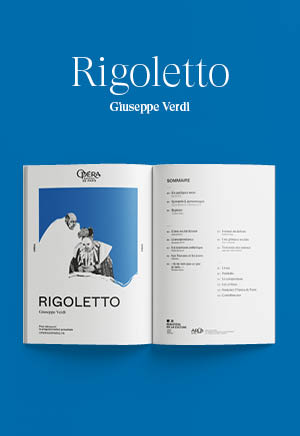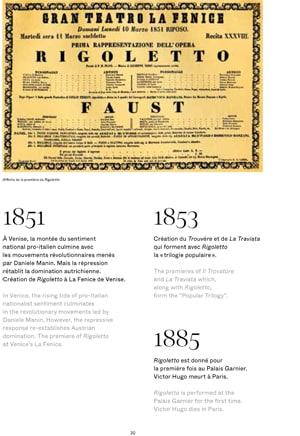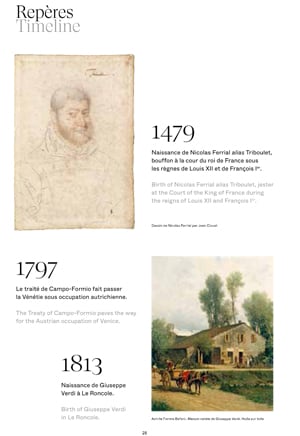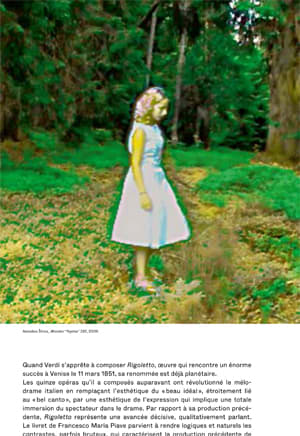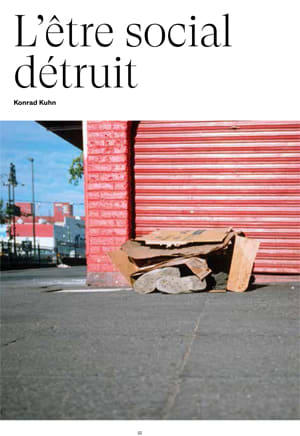Synopsis
Listen to the synopsis
“It’s a magnificent, grandiose subject, featuring one of the most extraordinary characters ever created in the theatre and in the world”. With these words, Verdi asked Francesco Maria Piave to write a libretto inspired by Victor Hugo’s Le roi s’amuse. A paradoxical character, Rigoletto is both a deformed buffoon, serving the Duke of Mantua in his seductive endeavours, and the embodiment of fatherly love for his daughter Gilda.
With its wealth of contrasts, the theme of the curse and its unforgettable arias, the opera, premiered at La Fenice in Venice in 1851, became the first of Verdi’s great popular successes alongside Il Trovatore and La Traviata. Claus Guth has conceived his staging as a long flashback in which Rigoletto, wracked with remorse, relives the death of his daughter, to which he unwittingly contributed.
Artists
Melodramma in three acts (1851)
After Victor Hugo, Le roi s'amuse
Creative team
Cast
- Sunday 01 December 2024 at 14:30
- Saturday 07 December 2024 at 19:30
- Tuesday 10 December 2024 at 19:30
- Friday 13 December 2024 at 19:30
- Monday 16 December 2024 at 19:30
- Thursday 19 December 2024 at 19:30
- Sunday 22 December 2024 at 14:30
- Tuesday 24 December 2024 at 19:30
- Saturday 10 May 2025 at 19:30
- Wednesday 14 May 2025 at 19:30
- Sunday 18 May 2025 at 14:30
- Wednesday 21 May 2025 at 19:30
- Saturday 24 May 2025 at 19:30
- Tuesday 27 May 2025 at 19:30
- Friday 30 May 2025 at 19:30
- Tuesday 03 June 2025 at 19:30
- Sunday 08 June 2025 at 14:30
- Thursday 12 June 2025 at 19:30
Latest update 11 June 2025, cast is likely to change.
Latest update 11 June 2025, cast is likely to change.
Latest update 11 June 2025, cast is likely to change.
Latest update 11 June 2025, cast is likely to change.
Latest update 11 June 2025, cast is likely to change.
Latest update 11 June 2025, cast is likely to change.
Latest update 11 June 2025, cast is likely to change.
Latest update 11 June 2025, cast is likely to change.
Latest update 11 June 2025, cast is likely to change.
Latest update 11 June 2025, cast is likely to change.
Latest update 11 June 2025, cast is likely to change.
Latest update 11 June 2025, cast is likely to change.
Latest update 11 June 2025, cast is likely to change.
Latest update 11 June 2025, cast is likely to change.
Latest update 11 June 2025, cast is likely to change.
Latest update 11 June 2025, cast is likely to change.
Latest update 11 June 2025, cast is likely to change.
Latest update 11 June 2025, cast is likely to change.
The Paris Opera Orchestra and Chorus
Media


Watch online the recording from season 15/16 on Paris Opera Play, with Quinn Kelsey, Olga Peretyatko, Michael Fabiano, Rafal Siwek...
Access and services
Opéra Bastille
Place de la Bastille
75012 Paris
Public transport
Underground Bastille (lignes 1, 5 et 8), Gare de Lyon (RER)
Bus 29, 69, 76, 86, 87, 91, N01, N02, N11, N16
Calculate my routeCar park
Parking Indigo Opéra Bastille 1 avenue Daumesnil 75012 Paris
Book your spot at a reduced price-
Cloakrooms
Free cloakrooms are at your disposal. The comprehensive list of prohibited items is available here.
-
Bars
Reservation of drinks and light refreshments for the intervals is possible online up to 24 hours prior to your visit, or at the bars before each performance.
-
Parking
You can park your car at the Indigo Opéra Bastille. It is located at 1 avenue Daumesnil, 75012 Paris.
In both our venues, discounted tickets are sold at the box offices from 30 minutes before the show:
- €35 tickets for under-28s, unemployed people (with documentary proof less than 3 months old) and senior citizens over 65 with non-taxable income (proof of tax exemption for the current year required)
- €70 tickets for senior citizens over 65
Get samples of the operas and ballets at the Paris Opera gift shops: programmes, books, recordings, and also stationery, jewellery, shirts, homeware and honey from Paris Opera.
Opéra Bastille
- Open 1h before performances and until performances end
- Get in from within the theatre’s public areas
- For more information: +33 1 40 01 17 82
Online
Opéra Bastille
Place de la Bastille
75012 Paris
Public transport
Underground Bastille (lignes 1, 5 et 8), Gare de Lyon (RER)
Bus 29, 69, 76, 86, 87, 91, N01, N02, N11, N16
Calculate my routeCar park
Parking Indigo Opéra Bastille 1 avenue Daumesnil 75012 Paris
Book your spot at a reduced price-
Cloakrooms
Free cloakrooms are at your disposal. The comprehensive list of prohibited items is available here.
-
Bars
Reservation of drinks and light refreshments for the intervals is possible online up to 24 hours prior to your visit, or at the bars before each performance.
-
Parking
You can park your car at the Indigo Opéra Bastille. It is located at 1 avenue Daumesnil, 75012 Paris.
In both our venues, discounted tickets are sold at the box offices from 30 minutes before the show:
- €35 tickets for under-28s, unemployed people (with documentary proof less than 3 months old) and senior citizens over 65 with non-taxable income (proof of tax exemption for the current year required)
- €70 tickets for senior citizens over 65
Get samples of the operas and ballets at the Paris Opera gift shops: programmes, books, recordings, and also stationery, jewellery, shirts, homeware and honey from Paris Opera.
Opéra Bastille
- Open 1h before performances and until performances end
- Get in from within the theatre’s public areas
- For more information: +33 1 40 01 17 82
Online

Discover opera and ballet in another way

Dive into the Opera world and get insights on opera and pop culture or ballet and cinema. Scan this code to access all the quiz and blindtests on your mobile.
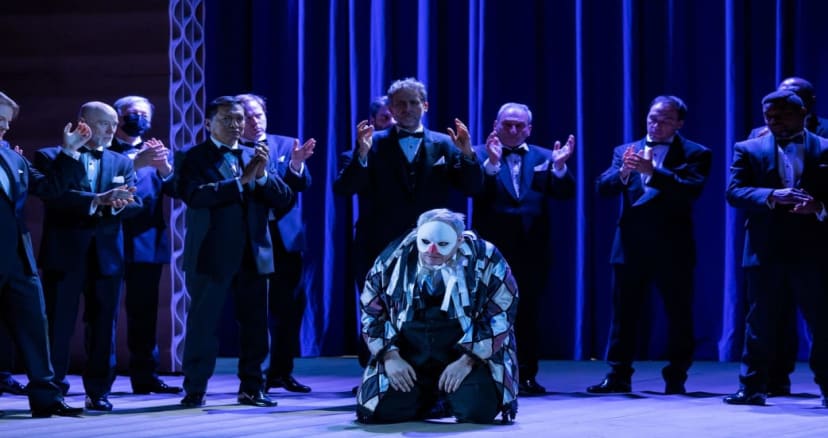
3 min
Rigoletto
Rigoletto: the true/false story
A big-hearted buffoon who would give anything to save his daughter...Can you sort out the real from the fake? It's up to you!
DiscoverYou will also like







































































